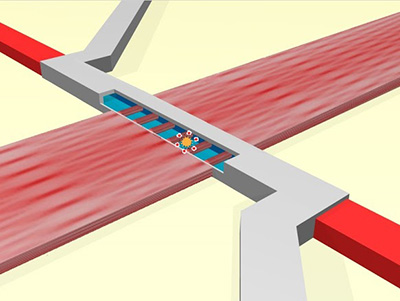Featured
Program recognizes patent awards and research

(Contributed)
November 8, 2017 — Santa Cruz, CA
Inventor Recognition Program recognizes UCSC faculty, students, and staff for their U.S. patent awards and groundbreaking research
The UC Santa Cruz Office of Research IATC (Industry Alliances & Technology Commercialization) has created the Inventor Recognition Program (IRP) to acknowledge researchers on a quarterly basis for their U.S. patent awards and to showcase the groundbreaking research that is conducted on the UCSC campus every day.
Launched in December 2016, the IRP is meant to recognize the hard work of UCSC faculty, students, and staff and to help them realize the value of their inventions by commercializing their inventions and discoveries.
July to Sept 2017 IRP Award Winners
HIV-1 GP 120 V1N2 ANTIGENS AND IMMUNOLOGICAL USES THEREOF
- Names & Titles: Phillip Berman, Distinguished Professor; Kate Mesa, Lab Manager; Bin Yu, Specialist
- Department: Biomolecular Engineering
This patent describes small, properly folded and glycosylated fragments of the HIV envelope glycoprotein, gp120, that appear to be useful components of an HIV vaccine. Over the last decade scientists have identified 3-4 sites on the 510 amino acid envelope protein recognized by protective antibodies. However these sites contain specific sugar molecules (mannose-5) and fail to promote a strong immune responses in the context of the full length gp120 molecule. Thus new ways are required to target antibody responses to these key sites rather than the dozen or more sites recognized by non-protective antibodies. This patent describes properly folded and glycosylated fragments of gp120, and methods for their production. When included in an HIV vaccine, these fragments can focus the immune response to sites recognized by protective antibodies.
SWITCHABLE LED LIGHTBULB
- Title: David Munday, Lecturer
- Department: Computer Engineering
The US patent office recently issued a patent to a senior design student team and Professor David Munday for inventing a new LED lightbulb capable of multiple brightness settings all within the same bulb. Most commercial LED light bulbs are manufactured for a given brightness level, but this bulb is adjustable through a number of possible controls including onboard buttons, wifi control, and automatic brightness control.
TWO CHAMBERED DUAL-PORE DEVICE
- Names & Titles: Holger Schmidt, Electrical Engineering Associate Dean for Research
- Department: Electrical Engineering
Nanopores form the basis of several approaches to next generation DNA sequencing technology. The basic idea behind this is to identify the bases that make up DNA one by one as they move through a nanoscopic opening. This invention describes how to improve control over the molecules to be tested by using two coupled nanopores, and how to implement this principle on a compact semiconductor chip.
BAMBAM: PARALLEL COMPARATIVE ANALYSIS OF HIGH-THROUGHPUT SEQUENCING DATA
- Names & Titles: David Haussler, Distinguished Professor, Biomolecular Engineering and Scientific Director, UC Santa Cruz Genomics Institute
- Department: Biomolecular Engineering, Genomics Institute
The purpose of this invention is to more efficiently compare biological sequences from two distinct samples. The analysis of biological sequence information usually involves the manipulation of enormous data files, which in turn results in long processing times to generate a meaningful comparison between the biological sequences. The inventions described in these two patents provides a more efficient way to compare biological sequences from distinct samples from a patient (e.g. normal tissue vs. tumor tissue) and generate patient-specific treatment instructions based on those sequencesThe purpose of this invention is to more efficiently compare biological sequences from two distinct samples. The analysis of biological sequence information usually involves the manipulation of enormous data files, which in turn results in long processing times to generate a meaningful comparison between the biological sequences. The inventions described in these two patents provides a more efficient way to compare biological sequences from distinct samples from a patient (e.g. normal tissue vs. tumor tissue) and generate patient-specific treatment instructions based on those sequences.
Originally published here: https://officeofresearch.ucsc.edu/iatc/ip-mgmt/irp/index.html
###
Tagged Industry Alliances & Technology Commercialization, UC Santa Cruz








